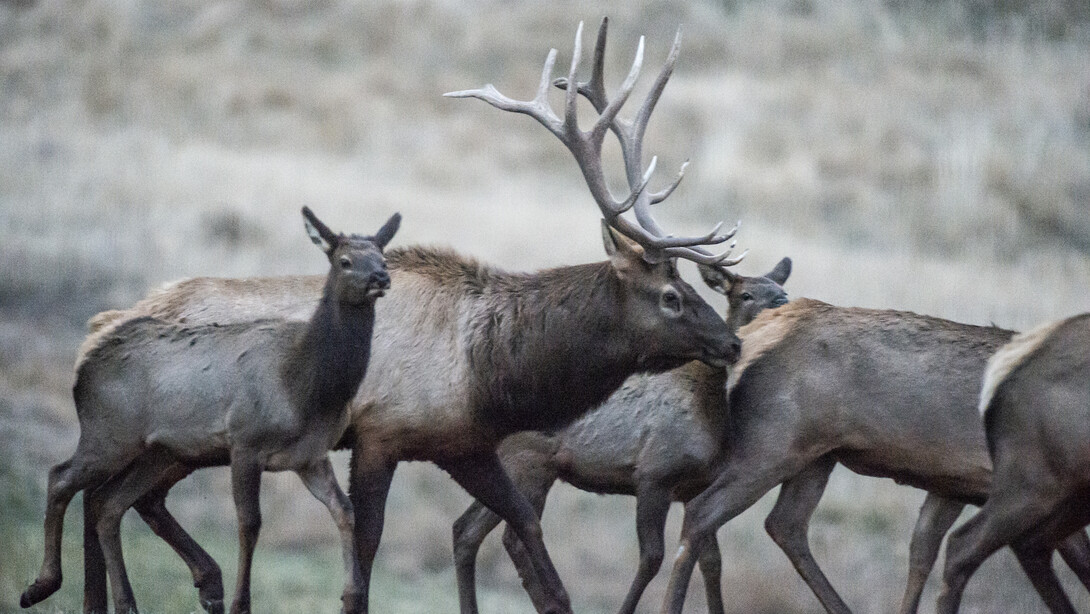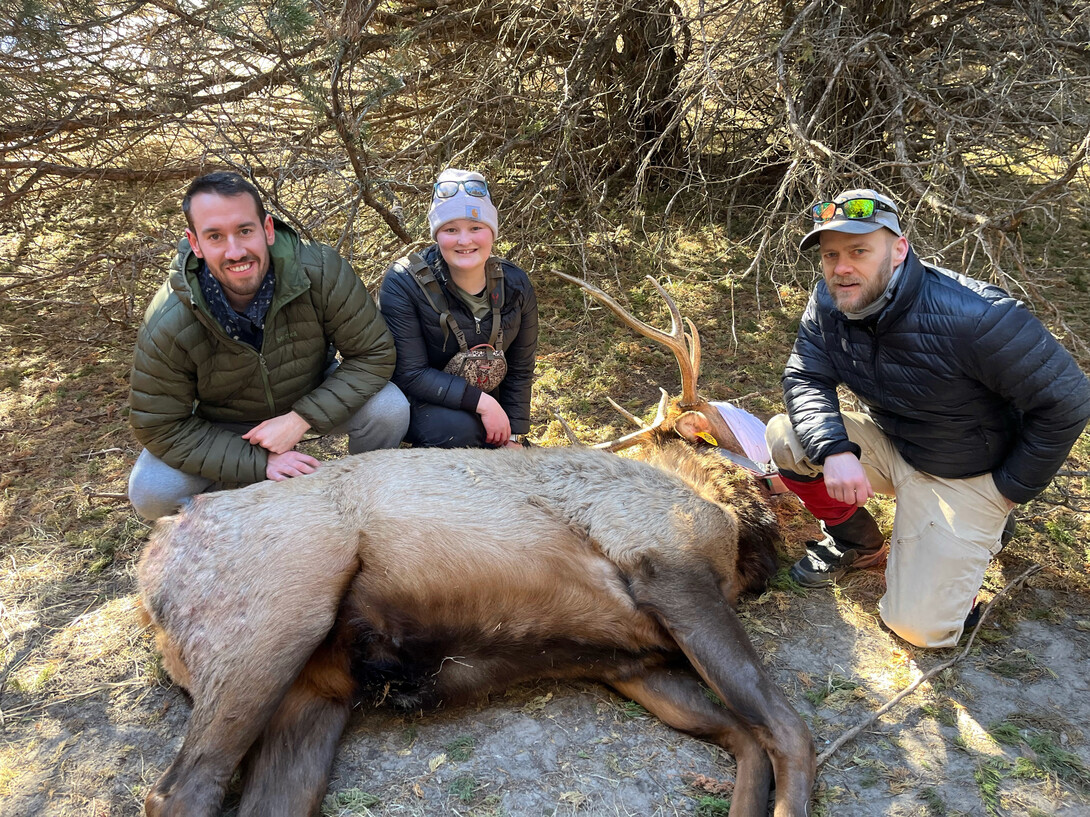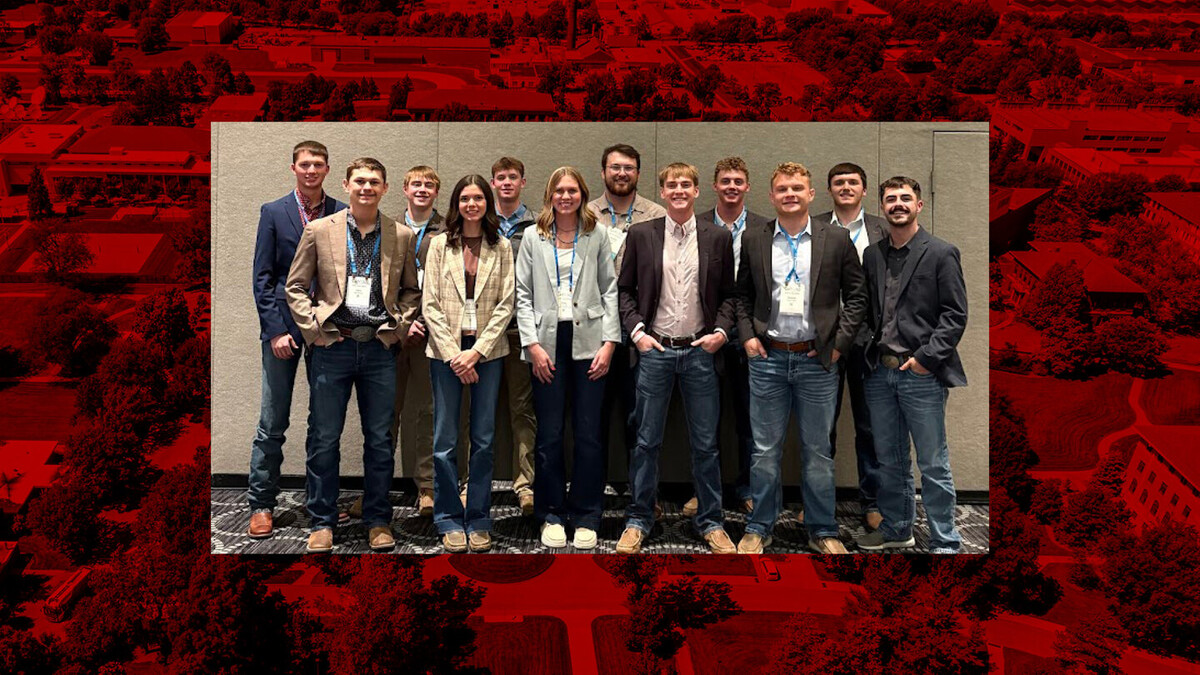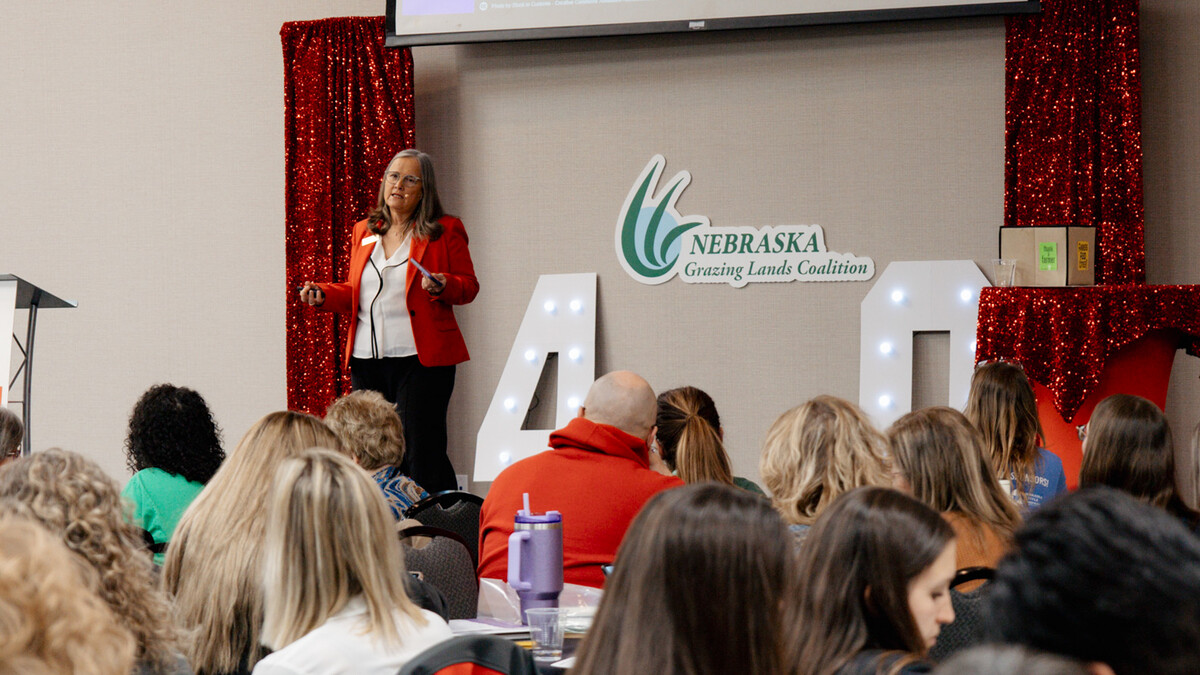
Elk returned to Nebraska in the 1960s after being eliminated from much of the Northern Great Plains in the late 1800s. Since then, elk numbers have expanded, and they now occupy much of western Nebraska.
A team of researchers from the University of Nebraska–Lincoln and the Nebraska Game and Parks Commission began a comprehensive study of elk behavior and population dynamics in 2022. They recently published the first findings from their research in the journal Biological Conservation.
Elk have been studied extensively in mountainous and coastal populations across North America, but fewer studies have occurred in prairie-agricultural landscapes such as Nebraska. Elk are highly valued by hunters but can also cause damage to crops. There was a need for reliable data about areas occupied by elk and their movements throughout Nebraska to inform wildlife managers tasked with responding to public interest and concern. Tabitha Hughes, a doctoral student at Nebraska and lead author of the new study, has spent the last three years working on these knowledge gaps.
“Not much is known about elk in Nebraska, which was a big motivation for our study,” Hughes said. “The better we understand these animals, the better equipped wildlife biologists will be to manage elk populations for the public to enjoy while also mitigating crop depredation.”
The team used helicopters to locate more than 200 female and male elk across Nebraska and outfit them with GPS tracking collars. The collars collect highly accurate locations of the animals and relay them to the researchers via satellites. Studying elk in Nebraska took the team to some expected natural landscapes, but also to places most people might not expect to find elk.
“We captured elk in many wild places, including the forested canyons of the Pine Ridge and the wide open spaces of the Sandhills,” said John Benson, associate professor in the School of Natural Resources and one of the project leaders. “We also caught a few elk in areas with vast stretches of crop fields in every direction and very little natural habitat. Studying elk in the highly variable landscapes across Nebraska highlights just how adaptable these animals are.”

Elk and other wildlife establish “home ranges,” or areas where animals pursue activities such as feeding, mating and raising young. The new study found that elk use seasonal home ranges that average about 25 square miles, ranging from one to as many as 225 square miles. Elk home ranges were smaller in areas with more tree cover and cornfields that provide food and shelter. Conversely, elk home ranges were larger in areas with more roads, likely due to fragmentation that causes elk to travel farther between patches of suitable habitat.
The team also used the data to identify elk that migrate between areas on the landscape in different seasons and understand why they might do so. Prior to the current research, it was unknown whether elk in Nebraska migrated and where they spent different seasons.
“Elk in Nebraska are what ecologists call ‘partially migratory,’” Benson said. “This means that some animals in a population migrate between spatially distinct areas used in different seasons, while others remain residents in more or less the same areas throughout the year. Usually this reflects ecological flexibility as different animals in the population adopt different strategies to access resources or respond to risks that vary across seasons.”
Agriculture appears to play a major role in migration and other seasonal movements. The new research showed that elk moved greater distances between seasons when leaving areas with less natural vegetation to access areas with more cropland. These results suggest that when elk are unable to find adequate natural forage, they are more likely to relocate to croplands with agricultural food.
“In mountainous landscapes, agriculture appears to reduce the prevalence of migration as many elk will choose to stay near cropland all year when they would otherwise move to higher elevations in the summer,” Hughes said. “But here in Nebraska, we’ve seen the opposite as cropland seems to encourage some elk to move from natural areas into agricultural fields during the summer and fall, and they will sometimes move quite far to do so.”
Some Nebraska elk migrated short distances (five to 10 miles), while others migrated more than 25 miles between seasonal ranges, including one that went more than 50 miles. All the elk radio-collared for the study were captured in Nebraska, but they did not always stay in the Cornhusker State. Some ventured into parts of South Dakota, Wyoming, Colorado and Kansas.
“The elk movements recorded with the GPS collars have opened our eyes to how much our elk really move,” said Luke Meduna, big game program manager with Nebraska Game and Parks and one of the project leaders. “These collars have helped us realize that what we once thought were distinct bands of elk in separate areas are the same elk using those areas at different times.”
Data from Nebraska elk continue to roll in and provide a window into their world. Next up for Hughes and the team is to tackle questions about elk behavior at finer scales — specifically how do elk acquire food and other resources while navigating risk from hunters and natural predators? The team will also estimate survival rates and identify causes of mortality. The work promises to provide wildlife managers in Nebraska with a more complete understanding of this wide-ranging species that appears to be continuing to expand its range eastward in the state.







